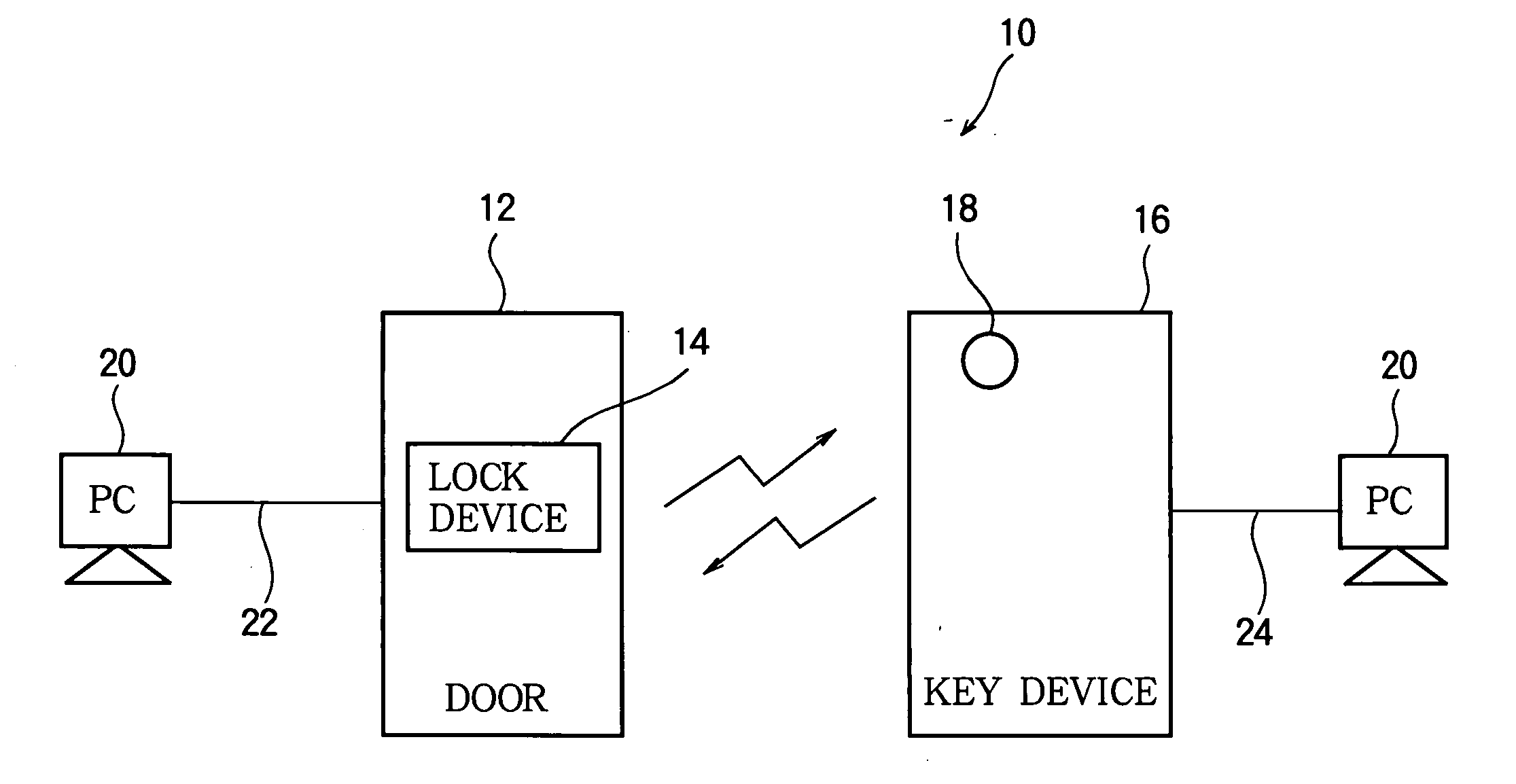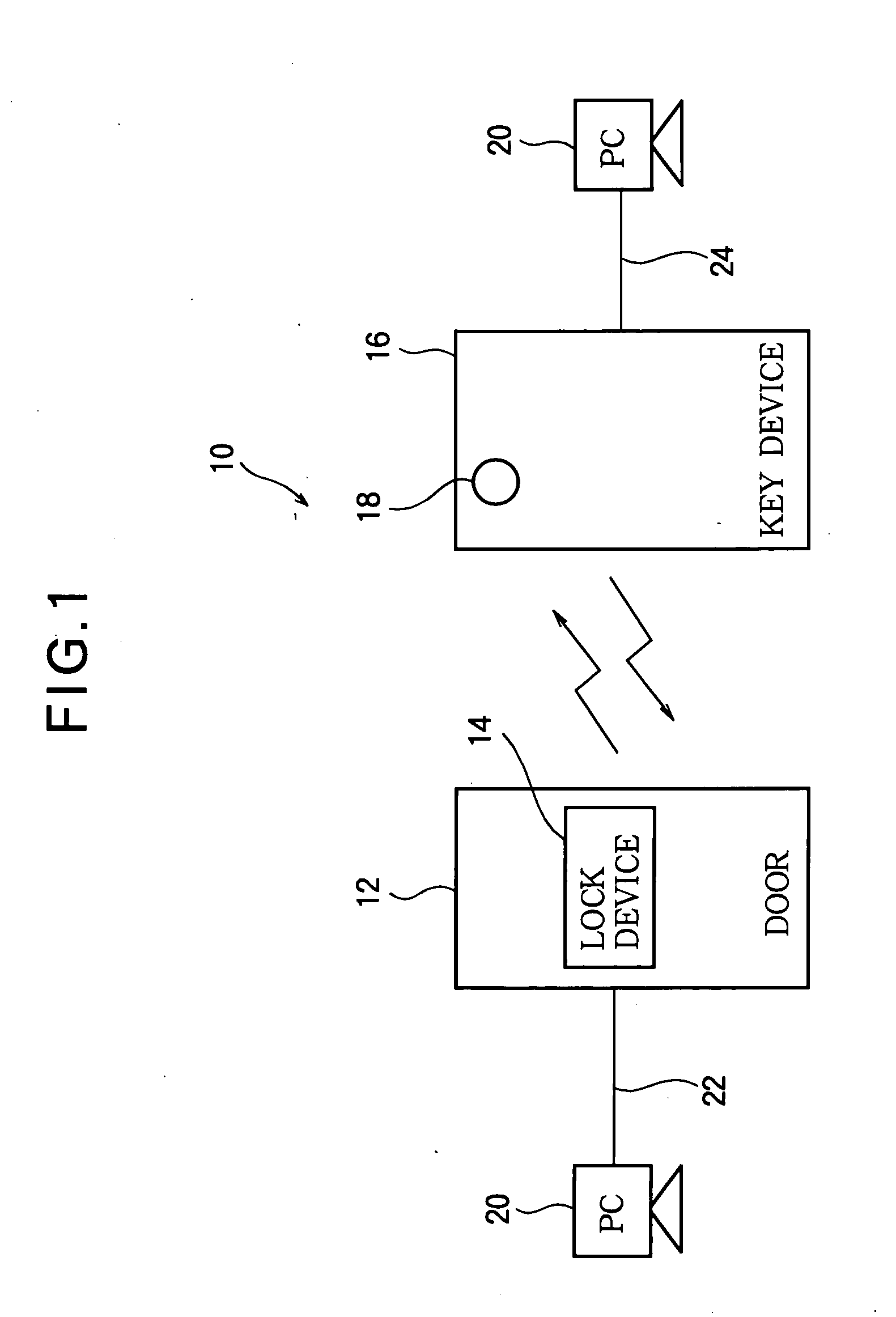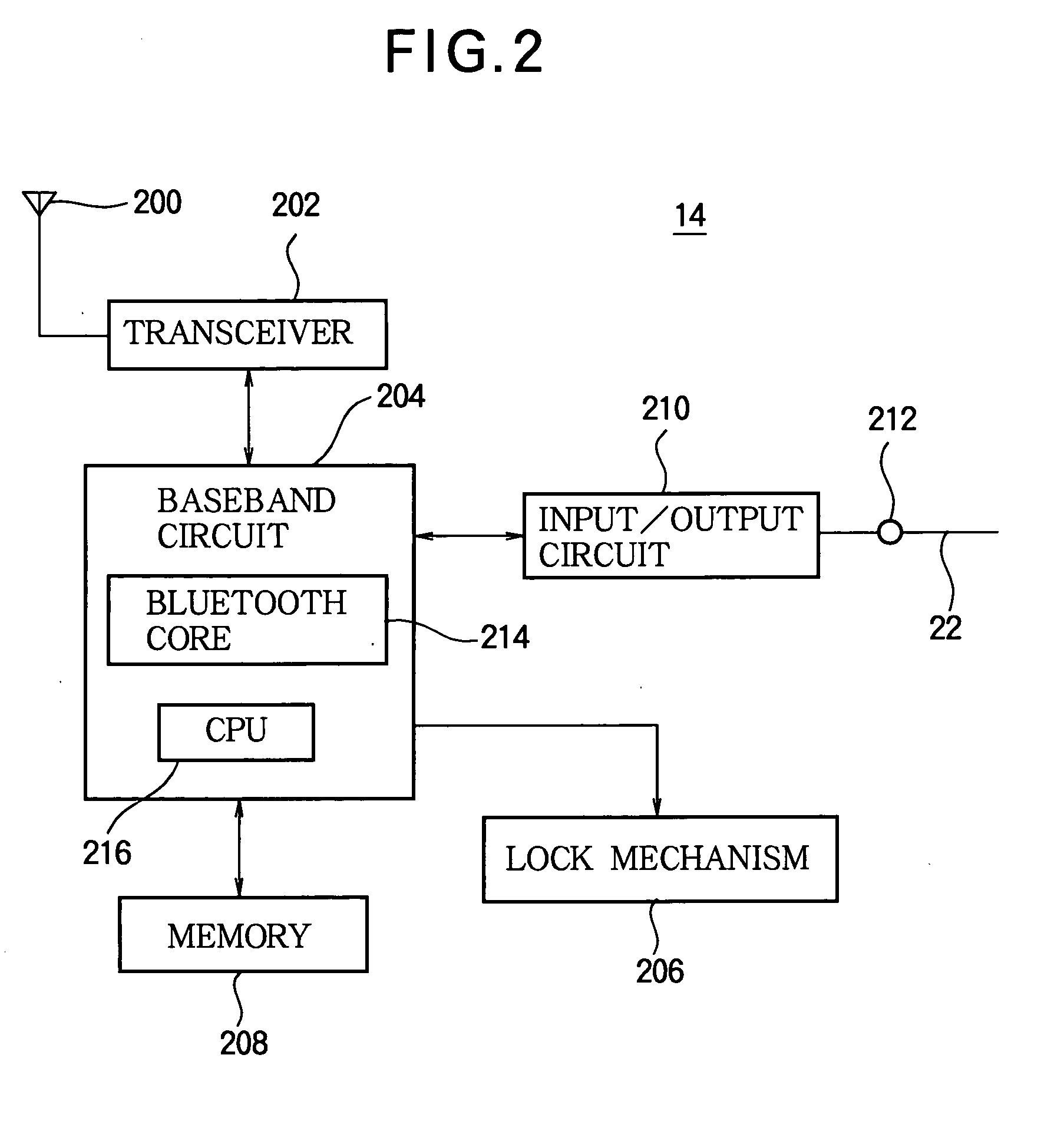Wireless key system
a key system and key technology, applied in the field of key systems, can solve the problems of simple metalworking process, key and lock replacement, clerk cannot be sure that a room is occupied, etc., and achieve the effect of high level of security
- Summary
- Abstract
- Description
- Claims
- Application Information
AI Technical Summary
Benefits of technology
Problems solved by technology
Method used
Image
Examples
Embodiment Construction
[0028] Embodiments of the invention will now be described with reference to the attached drawings, in which like elements are indicated by like reference characters.
[0029] Referring to FIG. 1, a first embodiment of the invention is a key system 10 for locking and unlocking a door 12 of a room, house, office, or other such structure. The door may be a hinged door, sliding door, gate, shutter, or any other device that openably and closably separates the space inside the structure from the space outside the structure. Installed in the door 12 is a lock device 14 that locks and unlocks the door 12 in cooperation with a paired key device 16. The door 12 is immobilized in the locked state, and is capable of being moved in the unlocked state.
[0030] In the key system 10, the lock device 14 and key device 16 exchange key information by short-range wireless communication, the lock device 14 authenticates the key information received from the key device 16, and the door 12 is unlocked if the...
PUM
 Login to View More
Login to View More Abstract
Description
Claims
Application Information
 Login to View More
Login to View More - R&D
- Intellectual Property
- Life Sciences
- Materials
- Tech Scout
- Unparalleled Data Quality
- Higher Quality Content
- 60% Fewer Hallucinations
Browse by: Latest US Patents, China's latest patents, Technical Efficacy Thesaurus, Application Domain, Technology Topic, Popular Technical Reports.
© 2025 PatSnap. All rights reserved.Legal|Privacy policy|Modern Slavery Act Transparency Statement|Sitemap|About US| Contact US: help@patsnap.com



